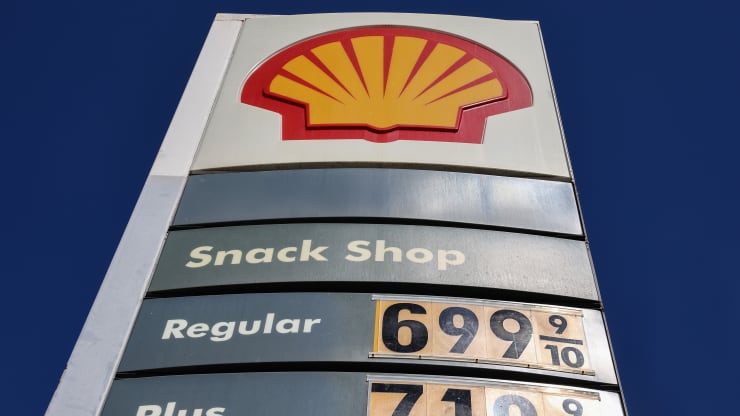
Consumers hoping to switch to an all-electric or more fuel-efficient vehicle, while Russia’s invasion of Ukraine pushes gas prices to record highs, will largely be out of luck.
A combination of supply chain problems, pent-up demand and record-low vehicle inventory levels means many new cars and trucks, including EVs, are already spoken for before they reach dealers lots. Those that are readily available are more often large pickups, SUVs and crossovers, since many automakers dropped or deprioritized small car production in recent years in exchange for vehicles with higher margins.
“Even for people who want to switch to electric, they have nowhere to go,” said Jessica Caldwell, executive director of insights at Edmunds.com. “Anything you’re looking to buy, you’re on a waitlist … or even if you’re looking to downsize your purchase, you’re paying top dollar. It just doesn’t make sense to make a move right now.”
Gas prices have surged since Russian President Vladimir Putin invaded Ukraine two weeks ago. The national average for a gallon of gas is $4.06, up 45 cents in a week and $1.30 more than a year ago, according to AAA. The U.S. and other countries responded to the invasion with sanctions against Russia, including bans or reductions of Russian oil imports.
That uncertainty and potential scarcity could continue to show up at the pump.
Meanwhile, customers face months, if not years, of wait time to purchase EVs. Luxury models are easier to find, but come at little to no discounts right now.
“EVs are great if you can get them (and can afford them),” Morgan Stanley analyst Adam Jonas wrote Wednesday in a note to investors.
U.S. vehicle inventory levels are down about 60% from a year ago and 70% from 2020 to roughly 1.1 million vehicles, according to Cox Automotive. EVs and hybrids only represent about 25,100 units, or 2.4% of that total supply, as of Feb. 21, according to the company.
“If your plan is to switch to an EV, a hybrid or even a small vehicle, good luck,” said Michelle Krebs, executive analyst at Cox Automotive. “There are not many of them available.”
Among the most readily available vehicles are the Ram 1500 and Chevy Silverado pickups, Jeep Grand Cherokee L SUV and Mazda CX-5 and Ford Escape crossovers, Cox reports. The least available are the Kia Telluride and Subaru Forester SUVs as well as the Honda Civic and Toyota Corolla sedans.
Automakers have shifted production priorities toward high-demand and high-profit trucks and SUVs as supply chain disruptions and parts shortages have wreaked havoc on the automotive industry for more than a year now.
As a result, and with those problems expected to escalate due to Russia’s invasion of Ukraine, many automakers are essentially selling whatever they can produce.
“People will buy what they can get,” said Jay Joseph, American Honda Motor Co. vice president of marketing & customer Experience. “There isn’t inventory for people to have choice. We’re seeing people accepting availability.”
Joseph said about 60% of Honda vehicles are already sold before they arrive at dealer lots. Before the recent inventory squeeze, roughly 75% of Honda’s vehicle sales took place on site, he said.
Industry experts don’t foresee gas prices, even at record levels, spurring long-term changes in what Americans decide to drive. If anything, the spike at the pump may change the amount they choose to drive — at least until gas prices stabilize at a lower level.
“We see these temporary shifts,” Joseph said. “Long-term, Americans are very adaptable to fuel prices. It depends how long the fuel price stay high; it depends how long the availability stays the way it is.”